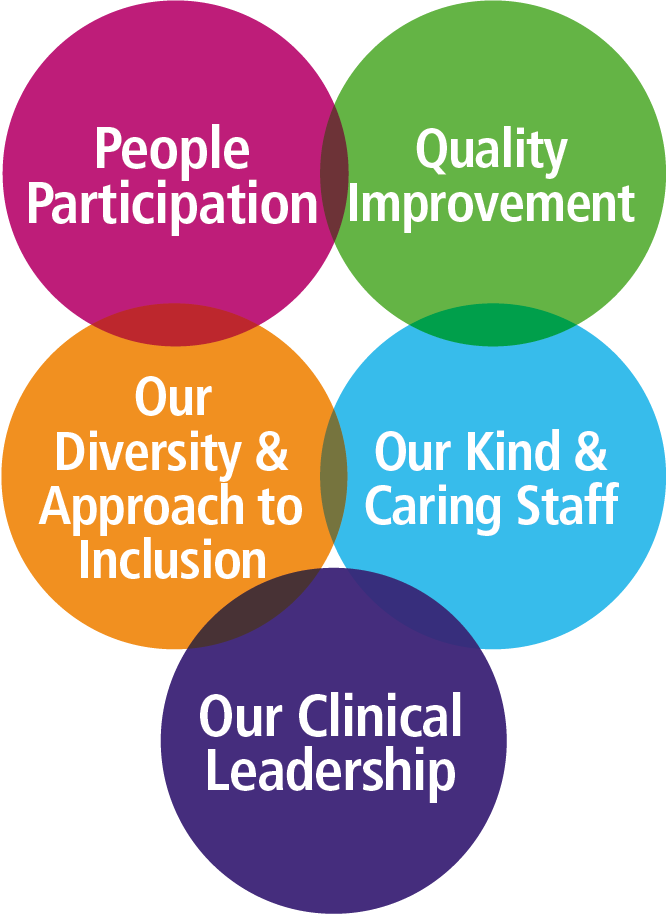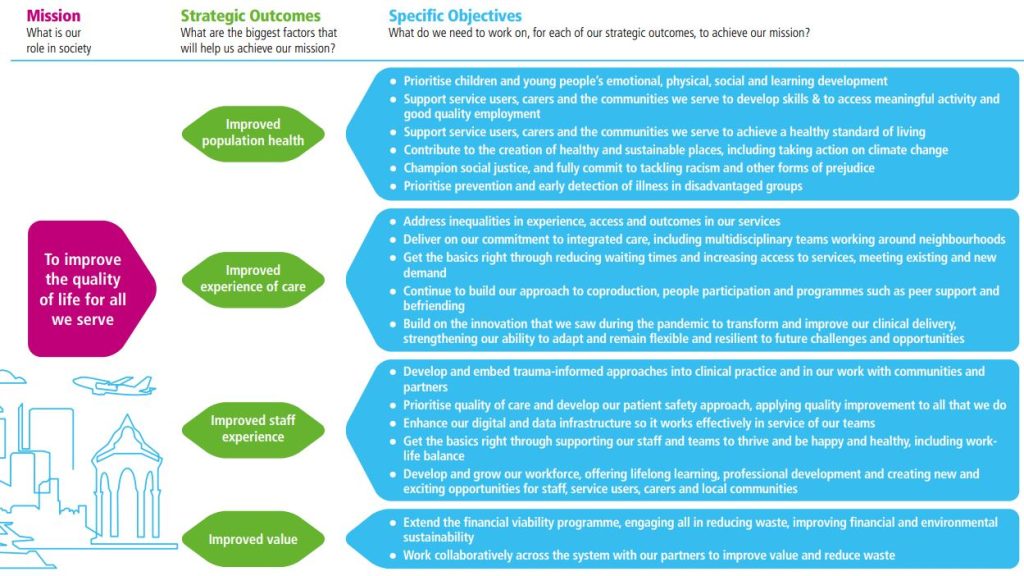About Us
 East London NHS Foundation Trust (ELFT) provides community health, mental health and primary care services to a population of around 1.8 million people across Bedfordshire, Luton and East London.
East London NHS Foundation Trust (ELFT) provides community health, mental health and primary care services to a population of around 1.8 million people across Bedfordshire, Luton and East London.
We aspire to improve the quality of life for all we serve, in collaboration with those who use our services. ELFT has five organisational treasures, with Quality Improvement (QI) being a core part of this.
Achieving this will mean we have to think differently, be innovative, and give everyone, at every level, the skills they need to lead change. Focusing on what matters to staff, service users and carers will be an integral part of this and give them the power to make change.
ELFT's Organisational treasures
ELFT believes our strengths as an organisation will support us on our journey, including:

ELFT’s Quality Management System
A quality management system represents a way of working and leading, that enables an organisation to plan, to deliver, to demonstrate it is meeting the expectations of its stakeholders, and to solve complex challenges. It applies to all aspects of the organisation’s work – not just to quality of care – and so is better represented as ‘the management system’.
The Management System at ELFT represents an evolution of the Juran Trilogy that reflects the needs and structures of the organisation and those of the healthcare landscape in which it operates.
Learn more about The Quality Management System
Click on the videos below to find out more about what each aspect of our quality system involves, what behaviours are aligned to each aspect of quality management, and to see how this integrated way of thinking about quality can be applied to a case study.
Please note the videos below do not have any sound.
Follow QI on social media
To keep up to date on the latest concerning QI at ELFT, follow us on our socials.




